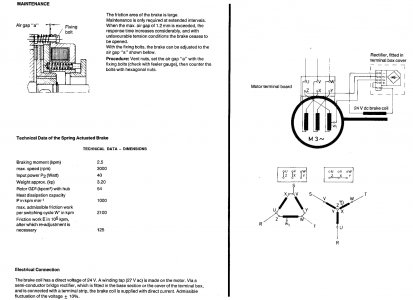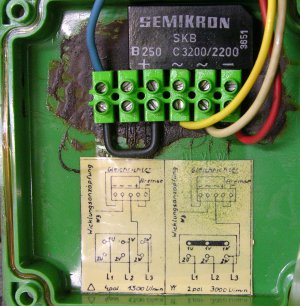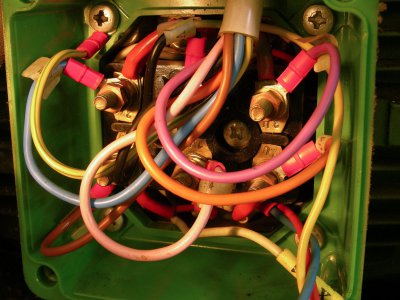- Joined
- Jun 28, 2021
- Messages
- 142
I was using the lathe today taking a skinny cut with a boring bar when the machine came to a grinding halt, literally. I stopped the motor, took it out of gear and the chuck spins freely. Trying to engage the motor, briefly, in either forward or reverse results in the motor straining to rotate and not getting very far. The brake seems to be engaged even when the motor gets voltage. At first I thought I may have lost a leg of our 3 phase service but the other machines run normally.
From this I'm assuming the contactors (C2 & C3) are OK and the shared leg (between forward and reverse) is the leg that operates the brake. I understand from reading another thread that the brake operates at 24 volts off of one leg. Is the 24V transformer inside the motor's connection box? Is it a common part I could source somewhere? Or, is it likely NOT the transformer that failed and I need to look elsewhere -- like the main contactor (C1)?? I have not yet looked for output from C1 because I'm not sure the motor would even try to turn without voltage from all three legs.
As you can see, I'm not a sparky-type so I'm here to find an expert or three to help guide my trouble shooting.
From this I'm assuming the contactors (C2 & C3) are OK and the shared leg (between forward and reverse) is the leg that operates the brake. I understand from reading another thread that the brake operates at 24 volts off of one leg. Is the 24V transformer inside the motor's connection box? Is it a common part I could source somewhere? Or, is it likely NOT the transformer that failed and I need to look elsewhere -- like the main contactor (C1)?? I have not yet looked for output from C1 because I'm not sure the motor would even try to turn without voltage from all three legs.
As you can see, I'm not a sparky-type so I'm here to find an expert or three to help guide my trouble shooting.




